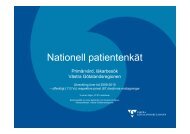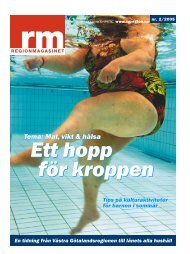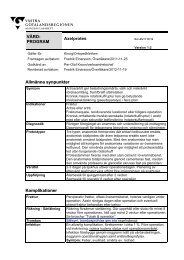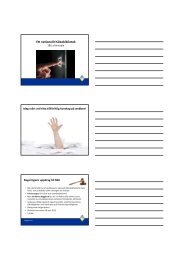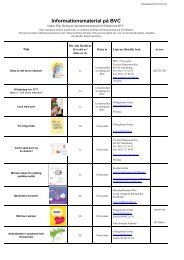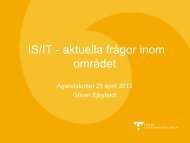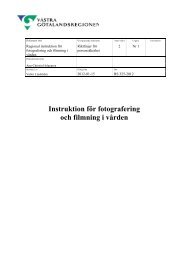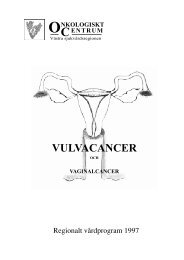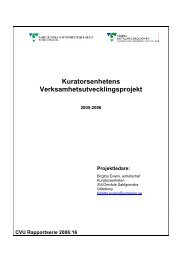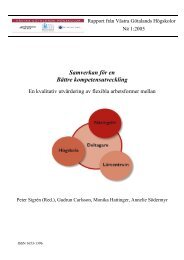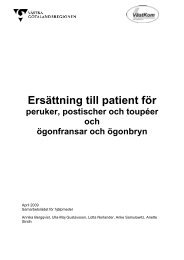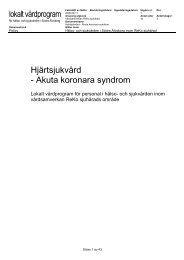FOURTEENTH ANNUAL EUROPEAN PRESSURE ULCER ...
FOURTEENTH ANNUAL EUROPEAN PRESSURE ULCER ...
FOURTEENTH ANNUAL EUROPEAN PRESSURE ULCER ...
You also want an ePaper? Increase the reach of your titles
YUMPU automatically turns print PDFs into web optimized ePapers that Google loves.
Thursday September 1st<br />
Proceedings of the 14th Annual European Pressure Ulcer Meeting<br />
Oporto, Portugal<br />
Retrospective analysis of patients with ulcers of (arterio-)venous, traumatic or decubitus origin<br />
treated with autologous skin substitute<br />
C.M.A. Reijnders 1 , L. Vink 1,2 , C.S. Blok 1 , R.J. Scheper 1,2 , C. van Montfrans 1 , E.M. de Boer 1,2 , S. Gibbs 1*,2<br />
1* VUmc, Netherlands, s.gibbs@vumc.nl; 2 A-Skin BV, Netherlands,<br />
Introduction<br />
We have developed an autologous full thickness living<br />
skin substitute consisting of reconstructed epidermis<br />
on fibroblast populated human dermis (SS) (Fig. 1).<br />
The SS is constructed from very small (3 mm<br />
diameter) punch biopsies of healthy skin taken from<br />
the patient during routine visits to the out patient clinic.<br />
The time taken to culture the SS is 3 weeks. The aim<br />
of this retrospective study was to evaluate the safety,<br />
efficiency and applicability of the SS together with the<br />
transferability of the protocol between different centres<br />
for treating chronic, hard to heal ulcers in an out<br />
patient as well as a hospitalized setting. The<br />
recurrence rate one year after complete healing was<br />
also assessed. Ulcers of (arterio-)venous (venous with<br />
in some cases an arterial component), post-traumatic<br />
or decubitus origin were treated in multiple studies<br />
between 2004 and 2009 in 7 Dutch centres.<br />
Methods<br />
Retrospectively a series of 5 studies (i) pilot, ii)<br />
insurance initiated, iii) nursing home, iv) individual<br />
case studies and v) an interim multicentre trial) were<br />
analysed. Ulcers of varying location, size and aetiology<br />
(e.g. (arterio-)venous insufficiency, post-traumatic,<br />
decubitus) were included. Sixty six ulcers (54 patients;<br />
ulcer size: 0.75-150 cm 2 ; duration: 0.25- 32 years) with<br />
a minimum follow-up time of 24 weeks after SS<br />
application were assessed. Wound-bed preparation<br />
consisted of vacuum-assisted-closure-therapy (5 days,<br />
hospitalized) or application of acellular dermis (5-7<br />
days, ambulatory). Patients received one application of<br />
SS followed by weekly evaluation and wound<br />
treatment. Time to heal, adverse events and<br />
recurrence rate one year after complete healing were<br />
recorded.<br />
Fig. 1: Full thickness autologous skin substitute<br />
68<br />
Results<br />
Complete ulcer healing occurred in 41 of 66 ulcers (62<br />
%). Ulcer size was significantly reduced at week 12<br />
compared to week 0 and week 24 compared to week<br />
12. At 12 weeks, ulcer size was significantly reduced<br />
in the hospitalized group compared to the out patient<br />
group. However after 24 weeks this difference<br />
between hospitalized versus out patient treatment was<br />
no longer observed. Ulcer recurrence was assessed 1<br />
year after time to complete closure. From the 41<br />
closed ulcers, 37 were available for follow-up, of which<br />
thirty (81%) were still closed. Only one minor adverse<br />
event was recorded (mild erythema of unknown cause<br />
around the area of the skin substitute which was<br />
successfully treated with systemic anti-histamine.<br />
Discussion<br />
This retrospective analysis shows that SS provides a<br />
safe and successful treatment for particularly hard to<br />
heal chronic ulcers of various origin. The protocol was<br />
transferable to 7 Dutch centres. The SS could be<br />
applied in an out patient setting making it more cost<br />
effective and less time consuming than hospitalized<br />
treatment.<br />
Clinical relevance<br />
Treatment for closure of hard to heal chronic skin<br />
wounds<br />
Acknowledgements<br />
We appreciate the help of all specialists, wound-care<br />
nurses and technicians involved in this study.<br />
Participating centres were: Phlebologic Centre<br />
Oosterwal, Nursing home Naarderheem, Groene Hart<br />
Hospital, Nursing home Ter Gooi, Red Cross Hospital<br />
Beverwijk, Waterland Hospital<br />
Conflict of Interest<br />
R.J. Scheper, E.M. de Boer and S. Gibbs are cofounders<br />
of the university spin off company A-Skin<br />
References<br />
[1] Gibbs S, et al. Br J Dermatol 155: 267-74, 2006<br />
[2] Spiekstra SW et al., Wound Repair Regen<br />
15(5):708-17, 2007.<br />
[3] Vriens AP et al., Cell Transplant 17(10-11):1199-<br />
209, 2008.<br />
Copyright © 2011 by EPUAP



